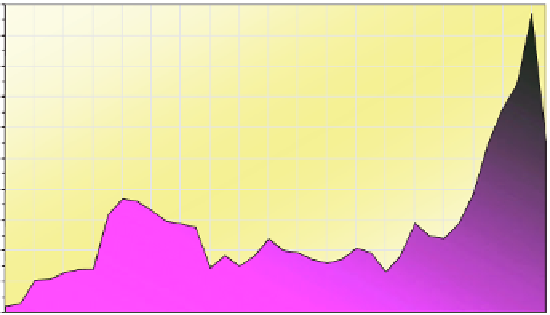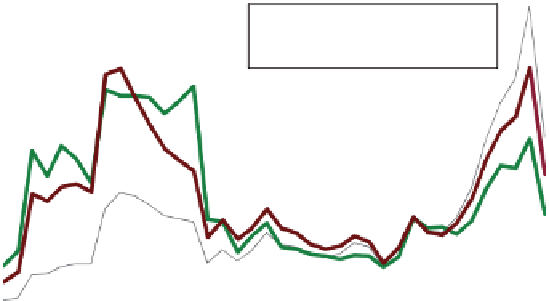Environmental Engineering Reference
In-Depth Information
100
$/barrel, nominal
€
90
/barrel, adjusted for inflation
$/barrel, adjusted for inflation
$
2000
/barrel
80
70
60
€
2000
/barrel
50
40
30
20
$/barrel
10
0
Figure 1.11
Development of oil prices in current prices and infl ation-adjusted.
ing the infl ation-adjusted oil prices. In 1980 one US dollar bought twice as much
as it could buy in 2005. To this extent, the infl ation-adjusted oil price at the time
was also twice as high. Another reason is that the economy today depends consider-
ably less on energy prices than at the time of the oil crisis. However, an unreasonably
high oil price would have a massive impact on the world economy.
As the supplies of fossil energies begin to run out, oil, natural gas and coal prices
will rise further. The dip in prices resulting from the fi nancial crisis in 2008 at best
offers a short breather. Another round of price increases is a certainty. Political risks
and a growing reliance on certain countries rich in raw materials also conceal the
considerable possibility of another sudden increase in prices. For economic reasons
it is important that some urgency be given to developing an alternative energy
supply beyond fossil or nuclear energy sources.
During the period of transition supply and demand will also allow a fl uctuation in
the prices of renewable energies, as was shown by the price increase for wood-
burning fuels in 2006. However, in the long term the prices for renewable energies
will continue to drop as a result of ongoing technical advances and more effi cient
production, whereas the prices for fossil energy sources and nuclear energy will
continue to rise.


































